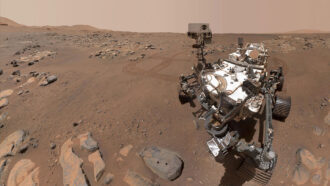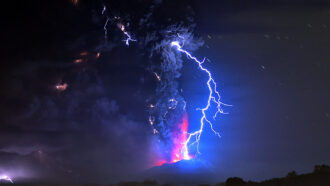
Animals
The Sonoran Desert toad can alter your mind — it’s not the only animal
Their psychedelic and other potentially mind-bending compounds didn't evolve to give people a trip.
Every print subscription comes with full digital access

Their psychedelic and other potentially mind-bending compounds didn't evolve to give people a trip.

Some Renaissance artists created eggs-quisite paintings by adding yolks to oil paints, which may have helped add texture and prevent yellowing.

NASA's Perseverance rover has turned up volcanic rocks, signs of flowing water and some of the materials necessary for life.

A newfound type of amorphous ice with a density close to liquid water could help scientists make sense of water’s quirks.

Chemical clues in embalming vessels reveal previously unknown ingredients used to prepare bodies for mummification and their far-flung origins.

As demand grows, scientists are inventing new — and greener — ways to recycle rare earth elements.

The scheme would provide valuable rare earth metals and help clean up coal mining’s dirty legacy.

Roman concrete has stood the test of time, so scientists searched ruins to unlock the ancient recipe that could help architecture and climate change.

Because of their unique chemistry, the rare earth elements can fine-tune light for many different purposes and generate powerful magnetic fields.

The underground ocean on Saturn’s icy moon may contain phosphorus in concentrations thousands of times greater than those found in Earth’s ocean.
Subscribers, enter your e-mail address for full access to the Science News archives and digital editions.
Not a subscriber?
Become one now.

